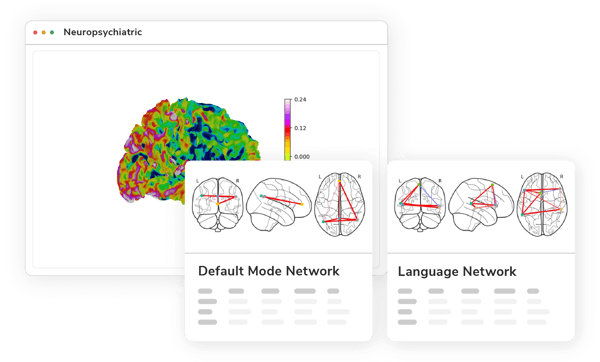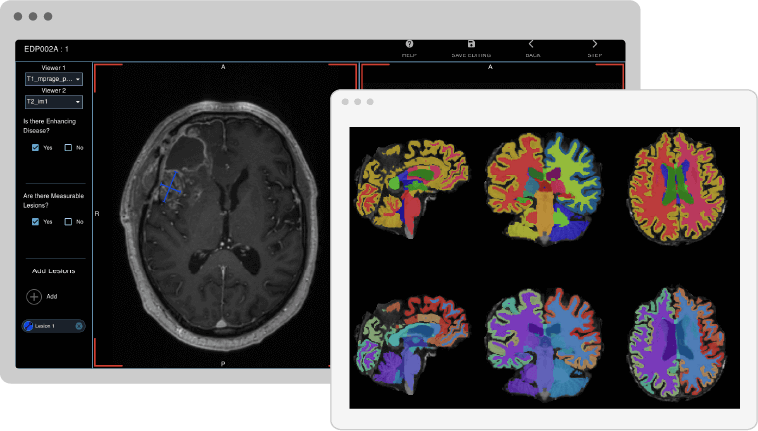Neuropsychiatric Diseases Imaging Biomarkers
Utilize leading imaging biomarkers to gauge brain structure, disease evolution, and therapy impact, all within an accessible and unified platform.

New Insights for New Therapies
Advanced neuroimaging analysis techniques offer a cutting-edge approach to extracting and interpreting imaging biomarkers from both functional and structural brain images. This innovation is unlocking deeper insights into neuropsychiatric disorders, enabling a more nuanced and comprehensive understanding of these complex conditions. By quantifying specific characteristics of the brain, such as region-specific volume and connectivity between diverse areas, these biomarkers serve as critical tools in diagnosis, prognosis, and therapy planning. This precise approach to brain analysis represents a paradigm shift in the study of neuropsychiatric disorders, fostering more targeted interventions and personalized care.
Patterns of Whole Brain Structural Connectivity
Graph theoretical analysis of structural connectivity MRI reveals highly connected hubs in brain networks, crucial for network functioning. This topological insight enhances understanding of the pathophysiology of psychiatric diseases like schizophrenia, affecting specific local or global brain networks. (30, 31, 32)
Interested in our neuropsychiatric biomarkers?
Explore our comprehensive range of specialized tools
All available in a single and easy-to-use environment
26. Lynall, Mary-Ellen, et al. "Functional connectivity and brain networks in schizophrenia." Journal of Neuroscience 30.28 (2010): 9477-9487.
27. Harrison, Ben J., et al. "Altered corticostriatal functional connectivity in obsessive-compulsive disorder." Archives of general psychiatry 66.11 (2009): 1189-1200.
28. Sheline, Yvette I., et al. "Resting-state functional MRI in depression unmasks increased connectivity between networks via the dorsal nexus." Proceedings of the National Academy of Sciences 107.24 (2010): 11020-11025.
29. Moradi, Elaheh, et al. "Predicting symptom severity in autism spectrum disorder based on cortical thickness measures in agglomerative data." NeuroImage 144 (2017): 128-141.
30. Guye, Maxime, et al. "Graph theoretical analysis of structural and functional connectivity MRI in normal and pathological brain networks." Magnetic Resonance Materials in Physics, Biology and Medicine 23.5-6 (2010): 409-421.
31. Ameis, Stephanie H., et al. "Impaired structural connectivity of socio-emotional circuits in autism spectrum disorders: a diffusion tensor imaging study." PloS one 6.11 (2011): e28044.
32. Cao, Qingjiu, et al. "Probabilistic diffusion tractography and graph theory analysis reveal abnormal white matter structural connectivity networks in drug-naive boys with attention deficit/hyperactivity disorder." Journal of Neuroscience 33.26 (2013): 10676-10687.
